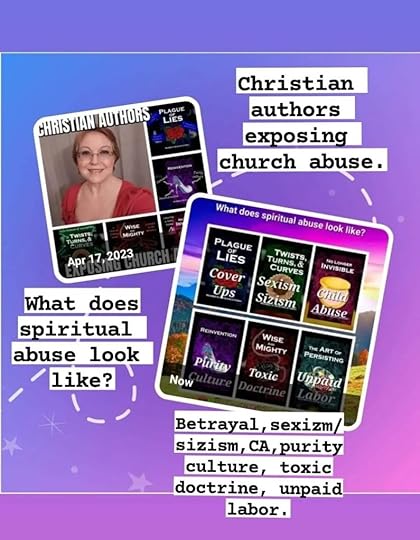Marbeth Skwarczynski's Blog
July 7, 2025
To Love a Beast
 Book Review:
Book Review: To Love a Beast by Karen Witemeyer is a remarkable retelling of Disney’s Beauty and the Beast with a healthy dollop of Greek mythology stirred in. This is an enjoyable, sweet read suitable for readers of all ages, from YA and upward. I highly recommend this novel to anyone who loves a good fairy tale adaptation.
When an encounter with an enchanting New York socialite goes horribly wrong, Everett Griffin ensconces himself in the imposing Manticore Manor deep in the heart of Texas. There, he is kept company only by his trusted staff, his art, and his favorite books — mostly science fiction novels he’s read until they’ve begun to fall apart.
Calista Rosenfeld’s talent as a bookbinder is largely unknown, since most customers look past the beautiful young woman to deal instead with her father. He is the artist of the firm, while she runs the business. Money is tight, so when they are contracted to bind a library’s worth of books for a man a few towns over, they praise God for His blessings. But when Papa is injured, Calista goes in his place, discovering too late that the man who hired her has a beastly reputation.
About the BookBook: To Love a Beast (One Upon a Time in Texas Book One)
Author: Karen Witemeyer
Genre: Christian Historical Romance
Release date: June 10, 2025

Beauty & the Beast in 1800’s Texas.
Once known among New York’s elite as the American Adonis, Everett Griffin now lives as a recluse in the wilds of Texas. The treachery of a former admirer left his face and his spirit riddled with scars, so he hides himself away, his only companions a trio of trusted servants and an oversized dog. Locals whisper of the beastly man who lives in the gloomy manor outside of town and his tendency to attack anyone who dares approach. Everett relishes his fearsome reputation and uses it as a shield to guard his privacy. Until a young woman as stubborn as she is beautiful infiltrates his sanctum and lays siege to his defenses.
When an injury to her father jeopardizes the family’s book binding business, Callista Rosenfeld determines to fulfill the contract herself, and no insufferable client or woman-eating dog will deter her. Finding unlikely allies among Mr. Griffin’s staff, Callista secures her position and sets to work transforming the manor’s remarkable library. Her employer transforms as well, his ill-tempered growls subsiding to reveal a considerate, intellectual nature. Affection blooms as Callista and Everett discover hidden depths in each other, but the evil schemes of a vengeful hunter threaten to leave their love and their lives in tatters.
Click here to get your copy!About the Author
Voted #1 Readers’ Favorite Christian Historical Author of 2023 by Family Fiction Magazine, bestselling author Karen Witemeyer offers warmhearted historical romance with a flair for humor, feisty heroines, and swoon-worthy Texas heroes. Karen’s books have won numerous awards, including the prestigious Christy Award, Carol Award, and National Reader’s Choice Award. Karen is an avid cross-stitcher, and makes her home in Abilene, Texas with her husband. Learn more about Karen and her books at her website.
More from KarenHaving Fun with Character Names
I was a college student when the Disney animated adaptation of Beauty and the Beast released, and it instantly became my favorite fairy tale of all time. As a bookish young woman myself, I found Belle so relatable, and the rest of the cast delighted me as well. Throughout my Texas Ever After series and continuing with this new Once Upon a Time in Texas series, I’ve enjoyed paying homage to the Disney characters who inspired my western retellings. To Love a Beast is no different.

Let’s start with our beastly hero, Everett Griffin. The name Everett means “wild boar” and a griffin is a mythological beast with the body of a lion and the head of an eagle. Quite fitting for our Beast. Next is the lovely Callista Rosenfeld, a book binder and novel lover. Callista means “most beautiful,” perfect for our Beauty. Rosenfeld references the enchanted rose that plays such a key role in the fairy tale plot.
Next, we have our supporting cast. Mrs. Potter is our motherly housekeeper who invites Callista to tea on a regular basis. Our stuffy butler playing the role of Cogsworth is Mr. Timens. Notice the TIME in his name that pays homage to the clock-faced Disney character. Everett’s valet and best friend is Ray Lightfoot, who’s name plays with the candlestick image with both his first and last name.
I love having fun with my character names and giving them additional story meaning. You’ll find more Beauty and the Beast Easter eggs in my story as well. Those elements make the story so fun to write, and I hope you will find it incredibly fun to read as well.
Happy Reading!
~Karen
Blog StopsMaureen’s Musings, June 27
Melissa’s Bookshelf, June 27
Truth and Grace Homeschool Academy, June 28
Locks, Hooks and Books, June 28
The Important Things in Life: God, Books, & Chocolate , June 28
Debbie’s Dusty Deliberations, June 29
Inspired by Fiction, June 29
Babbling Becky L’s Book Impressions , June 30
Where Faith and Books Meet, June 30
Devoted Steps, July 1
Sylvan Reads, July 1
She Lives To Read, July 1
Texas Book-aholic, July 2
Blossoms and Blessings, July 2
Happily Managing a Household of Boys, July 3
Blogging With Carol, July 3
Stories By Gina, July 4 (Author Interview)
Labor Not in Vain, July 4
For Him and My Family, July 5
Holly’s Book Corner , July 5
Jeanette’s Thoughts, July 6
Jodie Wolfe, July 6
The Lit Lady, July 7
Wishful Endings, July 7
Bizwings Book Blog, July 8
Life on Chickadee Lane, July 8
Books You Can Feel Good About, July 9
Mary Hake, July 9
To Everything There Is A Season, July 10
Life Love Writing, July 10
Min Reads and Reviews, July 10
Giveaway
To celebrate her tour, Karen is giving away the grand prize of an eBook copy of the book and Beauty & the Beast themed goodies!!
Be sure to comment on the blog stops for extra entries into the giveaway! Click the link below to enter.
August 24, 2024
Big News!

It’s finally time for me to share some big news.
Really big news.
News I never, ever thought I’d be blessed to share.
I have signed a contract with Elk Lake Publishing!
ELP is a traditional house that encourages writers to maintain the integrity of their voices while supporting them in their publishing journey. https://elklakepublishinginc.com/
I became aware of Elk Lake Press through Jane Daly. We have beta-read each other’s books, and I’ve worked with her on her blurbs.
When she announced that she was a new acquisitions editor at Elk Lake, I was excited for her. Then she said she was seeking submissions—and I was disappointed that I had nothing to offer. I was working on one of my indie novels, book 7 in my series, so that was a no-go. I was also toying with the beginnings of a speculative fiction novel that wasn’t anywhere ready to be seen by anyone other than me (as my pantser-self was still attempting to work out the plot).

And then, I dove deep into my computer files to retrieve the first novel I ever wrote (and re-re-re-re-rewrote).

While I always loved the concept and the story, which always made me cry, the timing was never right.
Until now.
I sent my as-is manuscript to Jane, who gently suggested that I brush up on the required formatting for the company. I hit the (web)links and began crafting my proposal for a book I told myself I’d never see published.
I started writing the story over twenty years ago while attending college. I was married, raising two sons, and working a few jobs when I thought, You know what? I’m just not busy enough. I think I’ll write an epic novel about a Bible character.
Of course, back then, I had no idea what I was doing, and my novel ended up being 150,000 words long. Over the years, I put it through multiple rewrites and eventually isolated the book’s first part to create a more focused (and manageable) book. I figured the rest of the story could be a sequel or two. Eventually, I stored the manuscript on my computer and focused on my teaching career.
The next time I wrote a novel (while still teaching), I set it in real time because the story reflected actual current events. The same thing happened when I wrote my second contemporary novel, and third, and on through the rest of The Rose Collection.
I became an indie writer specifically because I had stories to tell. Unfortunately, those stories didn’t resonate with the agents/publishing houses of five years ago. The fact that my contemporary Christian novels spotlight recovery from spiritual abuse was off-putting to many in traditional publishing, but readers were ready for stories that were equal parts gritty, transparent, heartbreaking, triumphant, and uplifting.
I wasn’t the only indie writer exploring the realities of spiritual abuse and recovery. While promoting my own work, I befriended other indie authors and some traditional writers who had found publishing houses that supported their vision (like ELP did for Jane Daly). We created a loose network of writers who supported and encouraged each other.
Over the past four years, I’ve leaned heavily into my preferred genre, contemporary Christian fiction, while never forgetting that I started in a completely different genre—biblical fiction.
But there are some similarities. For instance, I made it a point to relax the dialogue in my Biblical novel. I wanted my character to act, feel, and talk like the real person she was. I found the entertainment industry’s version of Bible characters off-putting. They tended to speak like they were in an extremely serious college production. Everything was played to the nth degree with no downtime for casual conversations, light-hearted teasing/laughter, or deeper personal insights and growth. Everyone was serious—and yet superficial— all the time.

So, I did my best to make my character real. I gave her responsibilities, talent, and privilege paired with a lack of self-confidence, limited experience, and an unfamiliar environment. I wanted her to be relatable even 4,000 later.
With each rewrite, her story became clearer. She became an active participant in her life, not just an observer. So, when her world falls apart, the reader mourns with her.
Setting the Biblical fiction book aside to write contemporary Christian fiction was good. My growing experience with the contemporary genre has helped me make my historical character more relatable.
About a week after I sent my newly formatted copy and proposal to Elk Lake Publishing, I received a welcome email with a contract attached.
Have you ever felt a dozen emotions at once? I did that night. Wordlessly, I slid my phone across the table to my sister. She read the email and looked confused, so I explained, “I got a book contract!” I sent screenshots to my husband and sons, and we celebrated together online.
I’m excited about this new chapter of my life and thrilled to work for a company as lovely as Elk Lake Publishing—they have been unbelievably kind to me. I hope that this is just the beginning of a wonderful working relationship.

June 30, 2024
The Sisters of Corinth Review

A Roman family living in a Greek colony and split between two religions is the focus of The Sisters of Corinth by Angela Elwell Hunt. This well-written historical Christian novel guides readers through a world from 2,000 years ago while remaining relevant. Two sisters, one a Christian and one a worshipper of Aphrodite, share a home but little else. When the opportunity arises for one of them to marry into a high-ranking Roman family, it shatters the precarious peace between the two women. It is an excellent novel for those who love early-church history and family drama.
About the BookBook: The Sisters of Corinth (The Emissaries: Book 2)
Author: Angela Hunt
Genre: Biblical Fiction
Release date: May 21, 2024

“Angela Hunt takes her craft to new heights–and depths–as she fully immerses us in the lives and struggles of first-century followers of Yeshua.”–Tamera Alexander, bestselling author on The Woman from Lydia
When the new provincial governor arrives in Corinth, the esteemed Chief Magistrate Narkis Ligus, father to Mariana and Prima, is delighted. He sees a golden opportunity to propel himself to greater power and fortune by uniting his and the governor’s households through the marriage of one of his beautiful unwed daughters to the governor’s firstborn son.
Yet complications quickly arise in Narkis’s own family. Mariana, his stepdaughter, holds steadfast faith in Yeshua, rendering her hesitant to marry a man devoted to the Roman gods, despite Narkis’s urging. On the other hand, Prima, his daughter by birth, yearns for a life of wealth and status and is willing to go to great lengths to secure a marriage that fulfills her desires–even if it means betraying Mariana to do so.
Click here to get your copy!About the Author
Angela Hunt is a New York Times bestselling author of more than 160 books, with nearly 6 million copies sold worldwide. Angela’s novels have won or been nominated for the RWA RITA Award, the Christy Award, the ECPA Christian Book Award, and the HOLT Medallion. Four of her novels have received ForeWord Magazine‘s Book of the Year Award, and Angela is the recipient of a Lifetime Achievement Award from both the Romantic Times Book Club and ACFW. Angela holds doctorates in biblical studies and theology. She and her husband make their home in Florida with mastiffs and chickens.
More from AngelaHello!
Thank you for helping me kick off the book tour for THE SISTERS OF CORINTH. This book is the second in my Emissaries series, but don’t worry—it reads like a stand alone.
The series features Gentiles who became believers in Christ through the ministry of Paul. The first book was about the woman called Lydia who lived in Philippi, and this book is about two step-sisters who lived in Corinth, the “Vegas” of the Roman Empire. What happened in Corinth stayed in Corinth, if you get my meaning, and there was a LOT going on in that pagan city.
I couldn’t help but think of Cinderella’s story as I wrote the opening of this book. The novel begins when the two sisters hear about the new governor coming to Corinth. He has a handsome and eligible son, and Narkis, the head of their family, is determined that one of his daughters should marry him. Prima is like her father, power-hungry and pretentious, while quiet Mariana is a believer in Yeshua. There’s a great deal of primping and preparing, scheming and scowling as the banquet draws near, and you’ll never guess which daughter the young man chooses—or maybe you will.
I hope you enjoy THE SISTERS OF CORINTH and thank you so much for taking part in this book tour. I am so grateful!
Always,
Angela Hunt
Blog StopsInspired by Fiction, June 19
Lots of Helpers, June 19
Debbie’s Dusty Deliberations, June 20
Locks, Hooks and Books, June 21
Devoted To Hope, June 21
Truth and Grace Homeschool Academy, June 22
Texas Book-aholic, June 23
Happily Managing a Household of Boys, June 23
Batya’s Bits, June 24
Abba’s Prayer Warrior Princess, June 25
She Lives To Read, June 25
Stories By Gina, June 26 (Author Interview)
Dee S White, June 26
Babbling Becky L’s Book Impressions, June 27
Lily’s Corner, June 27
Bigreadersite, June 28
Cover Lover Book Review, June 29
The Lit Lady, June 30
Holly’s Book Corner, July 1
Pause for Tales, July 1
Labor Not in Vain, July 2
Giveaway
To celebrate her tour, Angela is giving away the grand prize package of a paperback copy of The Woman from Lydia and The Sisters of Corinth and a $15 Amazon gift card!!
Be sure to comment on the blog stops for nine extra entries into the giveaway! Click the link below to enter.
https://promosimple.com/ps/2c069/the-sisters-of-corinth-celebration-tour-giveaway
May 30, 2024
Trust Fall Review

Trust Fall by Chautona Havig is a fast-paced combination of romance novel and spy thriller. Simon Garver is under strict instructions to observe and protect Eve “Kensi” Kensington without her knowing. Of course, Simon finds that restriction ridiculous. If they really wanted to keep Kensi safe, they’d do an extraction and guarantee her safety until the men who want her dead are found. With paradise in the background, two people who spent years in survival mode slowly learn to trust each other and God’s plan for their lives.
About the BookBook: Trust Fall
Author: Chautona Havig
Genre: Romantic Suspense
Release date: April 30, 2024

Protecting her without her knowledge might get them both killed.
Grief has held Eve “Kensi” Kensington captive long enough. Determined to move on after the death of her fiancé six years ago, Kensi moves to St. Alyn to help Ezra with the new boat book business. That there’s a great therapist on the island is just a bonus.
When the West Coast Agency learns that the former fiancée of a deceased informant is under the radar, Simon Garver is tasked to protect her—without her knowledge, if possible. Great. Listening in on her therapy sessions might be the worst thing he’s ever had to do as an agent.
Nope… scrap that. Falling for his client takes the cake.
When Kensi learns Simon has been keeping secrets from her, she’s done. Too bad the arrival of a guy sent to “take care of her” means she needs him. She’ll cooperate until she’s safe, toss the trust exercises her therapist has insisted on in the trash, and get back to her job on Ezra’s boat.
If only her heart would listen to the plan…
Take a trip to the Suamalie Islands where palm trees sway, the sand and sea pulse with life, and the people will steal your heart.
Click here to get your copy!About the Author
Chautona Havig lives in an oxymoron, escapes into imaginary worlds that look startlingly similar to ours and writes the stories that emerge. An irrepressible optimist, Chautona sees everything through a kaleidoscope of It’s a Wonderful Life sprinkled with fairy tales. Find her on the web and say howdy—if you can remember how to spell her name.
More from ChautonaSometimes life doesn’t go as you’d planned. Like at all. You think you’re going to have a great wedding, an idyllic honeymoon, followed by the perfect, picket-fence existence with the love of your life.
Then some crazy author comes along and rips it all away. Fiancé? Dead. Honeymoon? Not hardly. And by the time she’s done, that fence feels like someone rammed those pickets into her heart. All in a day’s work, and all before the first word of the story.
It’s a wonder that characters don’t revolt or something.
Look, here’s the deal. I just thought it would be cool to bring my Agency Files to Suamalie. And for that, we needed a tough background, because The Agency doesn’t get involved in disputes over spa appointments or boat rental rescues (most of the time).
So, after many hours of plotting and planning, I finally figured out how to torture my Kensi—I mean, give her an interesting backstory—while not tormenting readers. Too much. It’s been a couple of years (okay, it’s been six!), she’s having trouble coping, and…. Then what? How does The Agency fit in?
That started off as a conundrum that got really cool the more I thought about it. I mean, here’s the thing. The Agency is a protective entity. They swoop in and protect people from imminent danger while law enforcement does their job to remove that threat. Sometimes, as in Justified Means, this involves “involuntary” protection where they extract someone from his or her life until it’s safe to return—whether that person wants to be extracted or not.
I didn’t want that this time, but I also didn’t want Kensi to know she was in danger. So, off she goes to visit her friend Ezra in the Suamalie Islands and there she meets Ezra’s therapist fiancé. This much was easy to figure out.
And then it hit me. What if the agent was secretly protecting her? She doesn’t know it… but it’s happening.
Now I feel like Kronk from The Emperor’s New Groove. “Oh, yeah. It’s all coming together.”
Sometimes, I feel like Trust Fall is more romcom suspense than straight-up romantic suspense, but that’s okay, right?
Blog StopsDebbie’s Dusty Deliberations, May 25
Truth and Grace Homeschool Academy, May 26
Locks, Hooks and Books, May 27
She Lives To Read, May 28
Texas Book-aholic, May 29
The Lit Lady, May 30
Library Lady’s Kid Lit, May 31
Simple Harvest Reads, June 1 (Guest Review from Donna Cline)
For Him and My Family, June 2
Holly’s Book Corner, June 3
The Lofty Pages, June 4
Stories By Gina, June 5 (Author Interview)
Lots of Helpers, June 5
Karen Baney Reviews, June 6
Sylvan Musings, June 7 (Author Interview)
Mornings at Character Cafe, June 7
Giveaway
To celebrate her tour, Chautona is giving away the grand prize package of a $25 Amazon gift card and a copy of the book!!
Be sure to comment on the blog stops for nine extra entries into the giveaway! Click the link below to enter.
https://promosimple.com/ps/2b9d6/trust-fall-celebration-tour-giveaway
May 19, 2024
Too Much to Say
A manufactured evil spirit, a thought experiment about bears, a poorly considered speech, and multiple memoirs hitting the shelves mean I have a plethora of subjects to write about.
It’s overwhelming.
And it’s heartbreaking because with each subject has come discussion from half the population relaying their personal experiences—and objections from many of the other half stating that the personal experiences of people at their most vulnerable aren’t “good enough reasons” for change.
Once again, people REFUSE to listen—to REALLY hear what is being said.
The Jezebel SpiritI wrote about this in last week’s post, but it’s worth a revisit. https://thelitlady733988438.wordpress.com/2024/05/11/accused-of-having-the-jezebel-spirit-consider-the-alternatives/
Women and men, many of whom are in ministry, are accused of having “The Jezebel Spirit” when they refuse to accept spiritual abuse in its various forms. Speaking out against bullying, emotional abuse, and economic manipulation? Jezebel spirit! Protesting against church leaders covering up sexual crimes? Jezebel spirit! Pointing out that there IS NO JEZEBEL SPIRIT IN THE BIBLE? Well, then, you really DO have the Jezebel spirit!
Those who needed to hear the voices of these women the most refused to listen.
(For an excellent article concerning the Jezebel spirit phenomenon, click here: https://baremarriage.com/2024/04/stop-calling-women-jezebel-spirit/?fbclid=IwZXh0bgNhZW0CMTAAAR3OlQ47bdu72azYkSTTsY3ygfB9ml9J61axaxUCuWTpZLXbxZMwVvNNhls_aem_AXyoBT3tZlIu_kpRKsrC2bz9D9WiH9XpOE3lvXABN6zpiW48WBpnYiuLL6I4DJioIhGLq9TE5R_V_-h0uZ5OpDHN )
Man or Bear?The thought experiment went viral on every social media platform. Women were asked, “Would you rather run into a man you don’t know or a bear in the forest?” Overwhelmingly, women not only chose a bear, but they gave reasons why. They noted that a bear in the woods would most likely leave them alone and go about their bear business. When it came to men, however, women pointed out that even when they said no, played dead, made noise, or attempted to escape, the men who attacked them wouldn’t accept their answers and continued to hunt them until they got what they wanted.
So, how did men react to the women’s stories? Some became protective allies, demanding change. But others stepped forward to tell women that they were WRONG! Bears were MUCH more dangerous! Some of them even rephrased the question as “Would you rather be KILLED by a man or a bear.” Not the same question and even more chilling since many women had declared that at least a bear would “only kill you.”
Those who needed to hear the voices of these women the most refused to listen.
The Commencement SpeechAs a teacher, I attended 18 graduations and listened to 18 speeches by guest speakers. When the speaker had an educational background, the speeches were excellent, but when it was a friend of our pastor’s, we had no idea what to expect. They delivered the cringiest messages, including an incomprehensible 20-minute story about purchasing an expensive pen.
But I don’t remember a single graduation where our special speaker told the graduating class that their hard work and scholarship were to remain secondary to their future as spouses and parents. Not because our Christian school was anti-family—far from it—but because it didn’t have a place in a commencement address. And not a single speaker (in a denomination that was extremely patriarchal) ever told the girls that they were made primarily for marriage and motherhood.
While Harrison Butker’s speech addressed multiple issues within the Catholic church and Catholic culture, it was his address to the women that they “have had the most diabolical lies told to you” (referencing their desires for careers over marriage) that made the news. He told a class of college graduates that they’d be happier when they began to “disregard the outside noise and move closer and closer to God’s will in their life,” implying that God’s will is for them to marry and have children. He claimed to be the voice of “experience.”
Again, women spoke up, first, objecting to this specific part of his speech and then voicing their own experiences. Women who were widowed as young wives explained the difficulties they’d faced when they found themselves as the sole support of a family with giant gaps in their resumes, a lack of job experience, and no financial security. Others mentioned that even though they would love to be married and have children, it wasn’t an option for them. Some who are married and have children pointed out that it was nearly impossible for a single-income family to exist in the US. They didn’t have the luxury of a multi-million-dollar NFL contract.
And those who objected to the speech were accused of being anti-marriage.
Those who needed to hear the voices of these women the most refused to listen.
MemoirsI like to keep a non-fiction book in the mix of my reading pile. Usually, it’s a memoir. Lately, the memoirs focus on recovery from abuse (the subject matter of my novels). Unfortunately, I’m spoiled for choice. I’m currently listening to Rift by Cait West, detailing her life in the stay-at-home-daughter movement.
Baptistland by Christa Brown exposes the cultural acceptance of family and church abuse as a “normal” part of life and demands justice for the victims who have been railroaded into silence.
What is a Girl Worth by Rachel Denhollander was about young women victimized by the US gymnastics doctor Larry Nassar.
Counting the Cost showed the pressure even an adult woman, wife, and mother could feel when trying to find independence after being raised in an extremely controlling (and famous) religious family.
These women wrote their memoirs after years of addressing their abusers, talking to their spiritual leaders, and finally breaking ties and writing their stories, exposing the truth of all they’d experienced. They needed to make their voices heard.
But those who needed to hear the voices of these women the most refused to listen.
In attempts to be heard, women have created reels and TikToks, started podcasts, and written novels (my preferred path) and memoirs. Unfortunately, they have too much to say — and too few people are willing to listen.
May 11, 2024
Accused of Having the Jezebel Spirit? Consider the Alternatives.
To be clear right up front, I believe the whole “Jezebel Spirit” trend is hogwash used to brighten up some seriously dingy and sexist thinking. Just a few years ago, the term most often used was “bitter,” but I guess it’s lost its bite, so they’ve adopted this new appellation instead. It’s meant to demean, belittle, and injure.
As for the real Jezebel, anyone with basic Bible knowledge understands that she was a historical queen of Israel in the Old Testament and a metaphorical preacher in one verse in the New Testament. (You can read about her in I Kings 16:31; I Kings 18, 19, 21; 2 Kings 9; and Revelation 2:20.)
Jezebel was awful, but she hardly worked alone. Her husband Ahab (and his father before him) was already evil when their fathers arranged their marriage. Whenever Ahab had a bad idea (like murder), he knew his wife would stand by his side and cheer him on. He ran the country while Jezebel, always the submissive and obedient wife, ran the home. Between the two of them, they completely displaced the laws of God, made Ba’al worship the religion of the land, and threatened a painful death to anyone objecting to their leadership.
Ironically, we’re seeing this kind of displacement taking place today. Social media is full of “Christian” leaders who have started emulating Ahab. They’ve put themselves in positions of power and openly criticize, name-call, and even wish death upon those who question their unbiblical teaching and behaviors. The primary practices being called into question are the coverup of sexual abuse and the unchecked sexism spewed from pulpits that hurt their most susceptible members.
People are speaking up against these leaders and their organizations to create churches that will be safe spaces for everyone. The Ahab-like leaders don’t like being questioned or confronted. Ironically, they’ve called those who object to their evil deeds Jezebels.
It doesn’t make much sense. Jezebel supported evil done by her “anointed” leader. She wasn’t a rebel of the system she was in.
So, instead of using the label “Jezebel,” I’d like to offer more accurate alternatives to describe godly women and men who stand up against the Ahabs of our day.
The “spirit” of Deborah and JaelDeborah led the people of Israel, dispersing the truth of God’s laws as a God-appointed judge. She was chosen, not because no man was available, but because she was the perfect person to lead the nation. When she called Barak to lead the troops, she went with him to recruit fighters and stood with him at the Kishon River to order the attack.
Jael was the second of the one-two punch against Sisera—the general serving under King Jabin who was infamous for attacking people on the freeways (effectively stopping commerce, creating famine) and at wells (preventing people from getting necessary water) while also creating a system of human trafficking.
Jael’s husband was an ally of King Jabin and told Sisera where to find Barak. When Sisera’s army was wiped out, only Barak escaped. He sought comfort in Jael’s tent, making demands of her as if she were a servant. Jael played into his assumptions, offering him buttermilk when he asked for water and covering him with a robe when he stretched out to take a nap on her floor. Since Jael likely knew all about Sisera and his evil deeds, her actions against him make sense. She drove a tent peg through his head with one blow—nailing his head to the ground.
Deborah and Jael brought a man who attacked and abused the most vulnerable people in their community to justice. Theirs would be a good spirit to have.
The “spirit” of BathshebaBathsheba’s story starts with a horrific rape at the hands of a man she should have been able to trust. He was faithful, anointed, and a man “after God’s own heart.” She had no reason not to assume the best from him. She trusted his reputation, and he betrayed her.
Fortunately, a religious leader stood up for her. The prophet Nathan confronted David, laid out an airtight case and publicly exposed his guilt. David deserved the death penalty for what he did, but the punishment was laid on his son. Despite his repentance and forgiveness, the results of David’s actions continued to hurt Bathsheba and ruin his own life. Evil actions always have long-reaching results.
Bathsheba (who was proven blameless in the sexual assault she suffered) remained married to David and had four more children with him, with her youngest destined to become king. The next time her story continues in Scripture, she advocates for her son’s monarchy.
But her prophecy, recorded by Solomon in Proverbs 31, proves her advocacy went further than her family. The first ten verses echo her earliest experience with David and the court system. She encourages her son, telling him not to ruin his reputation (the way his father had), not to use alcohol to pervert the justice of the afflicted (the way his father had), and to speak up for those who couldn’t speak up for themselves when someone else intended their destruction (the way his father hadn’t). She told him to judge righteously and defend the poor and needy.
Bathsheba was a victim of abuse who became a powerful advocate. Her’s would be a good spirit to have.
The “spirit” of EstherTo make the story of Esther more palatable, it’s couched in terms of a “beauty pageant,” but in reality, it was the harvest of the nation’s virgins as a way for the king to cement power after losing an unpopular war. Esther spent a year preparing with the other women, undergoing cosmetic changes, and learning palace protocol. Her night with the king made her queen, but it was hardly her choice.
Even though thrown into an impossible situation, Esther proved her worthiness time and again. She saved her husband from multiple assassination attempts, and the king rewarded her with property and made her his trusted advisor.
Esther used her new position to protect a politically vulnerable group of people. Her’s would be a good spirit to have.
Avoiding the “spirit” of AhabThe Ahabs in leadership use prejudicial terms to injure those who dare question their authority. “Jezebel” suggests those who would protest evil done in the name of God are themselves malevolent. No godly woman or man wants to be called a Jezebel when they advocate, protect, and seek justice for the defenseless — but they’ll accept the name-calling if that’s what it takes to end abuse.
For more women to emulate as they follow God’s call, please check out The Women Who Set the Precedents.May 4, 2024
The Hardest Part of the Writing Journey
Most writers classify themselves as one of two things: a plotter or a pantser. A plotter painstakingly outlines, researches, and THEN begins to craft their story. A pantser takes to the keyboard with a nebulous idea and lets the character they’ve created have free reign while they take dictation. Plotters can’t understand how pantsers can begin to write without a clear endpoint, and pantsers find outlining stifling to the creative process. Their different writing styles don’t make them enemies. Plotters and pantsers tend to respect each other’s ways while continuing on their own.
Weirdly, the creative aspect of writing is usually the easiest. Even if we hit a creative block ( https://youtu.be/0EyRjbadqm8?si=a9MvJY9UBgWvCK49 ) in our current WIP, many of us have multiple stories in our computer files that we can revisit while we wait for the story problem in our main project to shake loose.
When it comes to publishing, that’s a different story. Most writers are in the “Do what’s right for you, boo!” camp, but there are a few who get vocal about the “Only way to publish.” Some think that the traditionally published are the only “real” books. They see the trad pub as the ultimate goal of the writing journey, with plenty of roadblocks set up to sift out “bad” writers. The few who dismiss non-trad writers tend to lump everyone in with self-published (through a vanity press) authors. Using a vanity press isn’t the mark of a talentless hack, but writers usually warn against these companies for their high prices and lack of promised support to the customer. No one should have to pay a publisher up-front. Indie writers pay out of pocket for edits, copyrights, and cover art before publishing their own books. Many, like me, choose this route so we can maintain ownership of our work (traditional publishing houses hold the copyrights of their author’s books) and write the stories we choose at our own pace.
Each category of writer faces difficulties. A plotter working for a traditional publisher may lose their contract mid-series. An indie pantser may get hit with a creative block they can’t shake. The combination of writing issues is as varied and real as the authors themselves. One thing we all tend to agree on, however, is that marketing is a time-consuming and difficult part of the writing journey.
Cue all the aggressive AI and IRL marketers who promise us readers — for a hefty price. It used to be the dream of writers to sign with traditional publishers specifically so they could have the marketing taken care of. After all, if the publisher doesn’t market the book, it won’t sell, so it would be in their best interest to pull out all the stops, right? Wrong. Once you get into the biz and talk to trad pub authors, you discover they are also competing for readers and looking for new ways to market their books. In fact, most publishers won’t look at a writer’s work until that author can prove the health of their online platform.
For an indie, like myself, maintaining my platform takes a large chunk of my day. Usually, I’ll create an ad in the form of an IG story and share it across my social media platforms. On weekends, I can post in various readers and writers’ groups. I try to shake things up a bit by also posting memes and reviews. The memes because that is exactly my sense of humor, and the reviews because I believe in promoting my fellow authors — whether indie or trad pubbed.

Many of us jokingly whine that we “just want to write!” instead of dedicating so much effort to publicizing our work, but we also understand that this is part of our chosen career. Marketing is hard, but it isn’t the hardest part of writing.
Speaking for myself, the hardest part of the writing process is overcoming discouragement. Usually, I can maintain focus and see the big picture of crafting a 12-volume series spotlighting recovery from spiritual abuse, but then there are times, like this week when I’m discouraged by non-existent book sales or even page reads. It can break a writer’s heart, not because of the money, but because I can’t persuade people that they’d like my books if they just gave them a chance.

I tried talking with someone about my feelings only to have them call my chosen genre into question. It was suggested that instead of writing novels detailing the difficulty of breaking free from abusive leaders, I should write something “light and fluffy” instead.
I’d heard that before when I excitedly described a project I was working on between edits of a series book. This new novel had a great premise, but I wasn’t sure exactly how it would develop. I felt like a little magical realism might be making itself known, and I was excited to see how it panned out. My news was not met with excitement. “Maybe try writing something fun. People read to escape their problems.” I stopped writing my between-edits book and went back to my original project. I finished another edit and realized that while it’s simmering, I need something to bring the story to a boil. This is the usual point where I set a WIP aside to let the ideas take shape while my brain is engaged with something else.

I threw myself into reading. I made ads. I checked my sales reports. I wrote reviews and shared them. I checked my reports page again and realized days had passed without sales or even pages read. I joined teams to promote new books by some of my favorite writers and accepted more ARCs to read during my edit break. I maintained my writer platform and engaged in multiple discussions. But in “real life,” I shared my frustration about having no pages read, and again, the solution suggested was to stop writing what I love and turn to a genre that is not my own.
I left that conversation still feeling sad but also a little angry. I spent the first two days of the week crying off and on, doubting my abilities as a writer. I spent the third day royally ticked off. Still, I wrote every day. As I said before, writing isn’t the hardest part.
I even started writing a stupid, light, fluffy book with the worst attitude imaginable. I completed one chapter and stored it in my computer files for the next time I have a block problem. Then I returned to my non-series book and realized I really like how it’s taking shape. It energized me.
In the midst of my frustration, I vented on Threads. (Give grace for all the social media sic’s.)
Today, I was told (by someone who has never read any of my novels) that the reason I probably don’t sell many books is because people don’t want to read about characters surviving and healing from spiritual abuse. They suggested I write something “fluffy.”
I don’t know how to do that. I’m not sure I want to.
At least they didn’t say my writing sucks. But then, they’d have to read it, so …
I think they have a misconception that my books are wall-to-wall spiritual battles. They don’t realize there’s deep friendships being forged as well as humor, sarcasm, pop-culture references, and the uplifting of the downtrodden. The stories are crafted to be faceted. And I love my very real characters. When they grow, I grow.

And then, through the beauty of social media, I got a response from Lisa Howeler that encouraged me:
I write fluffy and people don’t read that either so don’t worry. Your books will find those who need it.
She followed it up with:
I like how you said when they grow you grow. If felt very similar while writing the first series. I grew with those people — especially the male main character in my last book.
I went to Amazon and downloaded her first book, The Farmer’s Daughter, and read the first chapter that day. It’s sweet and well-written. You should check it out.
Discouragement is real in the writer community, but it’s also an easy fix. When you read a book you enjoyed, share it online. Write a review. Leave a rating. Like a writer’s page and share their posts. Follow them on Amazon, Goodreads, and BookBub. Suggest their titles to a friend. Above all, be kind.
Encouraged writers are prolific writers.

April 21, 2024
Cultivating Reader/Writer Relationships Online
The best book recommendations come from readers. Thanks to social media, it is easier than ever to reach out to those with similar interests and ask for suggestions concerning new authors, titles, and genres. Overall, my experience online is positive, primarily because I cultivate it to my tastes.
When I first heard the term “doom scrolling,” I was uncomfortable. I understood the concept but couldn’t understand why anyone would purposefully fill their social media timelines with a constant barrage of real or imagined tragedy. I’ve followed people who became so wrapped up in controversy that it became their entire personality, so I discretely hit “unfollow” and went on my merry way. Because I read and write, my social media pages are geared toward books and authors, with a generous dollop of humor mixed in for good measure.

I follow several Christian reader and writer groups on Facebook, where I get most of my recommendations. When someone reads a book they love, they enthusiastically share their discovery. My virtual TBR is out of control — and I love it. I won’t run out of great books any time soon. This is also where I enjoy quality literary memes.

On Threads, I click “follow” on posts by Christian authors looking for readers and readers looking for Christian authors. Threads has an excellent book lovers’ community with something for everyone. Indies are particularly loved there.

X, formerly Twitter, still has a strong author presence, but the focus tends to be on why we write and what inspires us. Since I write novels about recovering from spiritual abuse, I follow writers who write non-fiction books and articles concerning today’s church climate. Instead of declaring it “sad” that “the church” is under attack, I separate the organizations developed or hijacked by narcissistic leadership from the “real” church of individual believers. Those individuals stand up as whistle-blowers, demanding that God’s name be separated from evil deeds and coverups.

Read the articles here: https://x.com/rickpidcock/status/1779982978682089959

When it comes to TikTok, I admit I get distracted by cat videos—a LOT of cat videos—but I also make it a point to follow every suggested Christian author (booktok). Sometimes, the videos provide background on how they developed a character or announce a new release. I admit my own TikTok game is weak—it’s the introvert in me—but I try to keep my books somewhat represented on the platform. To see what a great TikTok author video—by the phenomenal Robin Patchen—looks like, click the link: https://www.tiktok.com/t/ZTLaYPdVe/

Stories on Instagram are my go-to for daily updates. Their automatic flow from one poster to another is perfect for early-morning scrolling. Authors share vacation pics, family events, and book ads all in one place. Readers excitedly offer reviews (bookstagram) and recommend what they’ve enjoyed to others. The best thing about IG? It’s pretty. Soooo pretty.

YouTube is where I listen to the podcasts that inspire me. Even when the subject matter is gritty, I can’t help but admire the guests who use their experiences to help and support others find justice. For an excellent example of this, click the link and watch the episode of Preacher Boys featuring three phenomenal advocates for change: https://youtu.be/y4LJ1qShaSU?si=cwd_8hYLBID5OHpQ
Occasionally, I’ll write down the names of authors on a site and head over to Amazon, Goodreads, and BookBut to follow them there as well. If they have an author page, I’ve probably liked it.
If you have a favorite author, take a few minutes today to follow them on every social platform you visit. If you aren’t into social media, that’s fine—to each their own—but please don’t discourage those who are. Readers and writers are communicating with each other now more than ever before, and that’s a beautiful thing.
April 13, 2024
Underrated: 10 Christian Authors You Should Add to Your TBR Today
There’s an argument about the purpose of reviews. Some adamantly believe that reviews are primarily for the benefit of authors. They make the book more visible and help writers find new audiences. Others claim that reviews are reader-centric and used to encourage others to read a book or warn them away.
Reviews ARE essential, but they don’t have to be an either/or prospect. They have multiple purposes and can benefit everyone involved with a book—the reader AND the writer.
I’m a writer, and a great review makes my day. I’ll screenshot it and share it on all my social media with a great big “THANK YOU!” to those who left kind words on Goodreads, Amazon, or BookBub.
As a reader, I seek out books suggested by others and do my best to promote the authors whose books I’ve enjoyed. But too often, I’m pulled up short when I realize the books I loved don’t have many reviews. When I share my recommendations, I get comments like, “I’ve never heard of this author!” or “I’ve never seen this book before! It looks good!”
And that’s why I review: because people NEED to read books by these talented authors. They don’t know what they’re missing.
If you are looking for talented authors writing phenomenal stories, here is a handy-dandy list to get you started.
Catherine BruskI was introduced to Catherine Brusk’s Finding Faith series when I asked for Contemporary Christian fiction recommendations in an FB group. She suggested her books, and I immediately downloaded her first novel, What Love Washed Up.
I didn’t even make it halfway through before I stopped to write a “Pre” review. I wanted EVERYONE to read her fantastic work. The book’s second half was just as impressive, so I wrote another review when I was done. What Love Washed Up has become my go-to suggestion when people want a gritty novel that compassionately deals with difficult issues.
This Christmas, Catherine Brusk released a holiday-themed rom-com novel that also explores the serious issue of how women are treated while working in full-time ministry. It’s called Forgiving St. Nick and should be read all year round.
Chautona HavigChautona Havig is a new-to-me author. I started with Twice Sold Tales, the first in her Bookstrings series. Her books are a comfy hug full of literary references and imperfect main characters whose dynamic changes keep the reader fully engaged.
I’ve also read her book, Random Acts of Shyness, a sweet story about a zookeeper whose awkward spouting of animal facts has seriously hurt his dating game. With the help of his sister and an online dating app, Heath “practices” dating with the hopes that someday he’ll be able to approach the girl he ran off by spouting information about the bladder-emptying capabilities of mammals.
I’ve not read any of Havig’s historical novels, but I can attest that her writing is solid and peppered with humor. Pick your favorite genre and read a Chautona Havig book today.
Jane DalyThe first book I read by Jane Daly was The Girl in the Cardboard Box. I left a review, and Jane Daly ended up reading my book Plague of Lies and left her review in turn.
Jane asked me to write an endorsement when she started preparing the Broken series. Of course, I said yes. Daly has a gift for creating novels featuring the grittier side of Christianity. We often picture those living the Christian life as perfectly dressed people attending church every Sunday, but Christ welcomed everyone. He reached out to the broken and brought them into the family of God. Daly’s characters explore the issues of acceptance, spiritual growth, and generational divides.
Jennifer SienesMy introduction to Jennifer Sienes was via a promotional program. I was committed to reading and reviewing Shadow Dancing, the second book in the Bedford County series. Before it became available, I downloaded and read book one, Night Songs. That first book made me a fan. I went on to read Itty Bitty Faith and her Christmas novella, Tangles and Tinsel. All of her books are filled with quick-moving plots and dynamic characters. When I see her name on the cover, I download it. If you’re looking for novels about second chances, put Jennifer Sienes’s name in the Amazon search bar.
Seines is also an insightful podcaster. She interviews other authors about their work, encouraging them in their calling. https://www.jennifersienes.com/podcast/
Kimalee FinelliKimalee Finelli has only one novel available (so far), but it is a must-read. Under Authority is fiction but is so realistic it reads like a memoir. For those who have no experience with the Independent Fundamental Baptist movement, Finelli’s novel offers a clear view of how easily a family can be sucked into a toxic ministry where their autonomy is siphoned away. For those of us who have left the clutches of the IFB, the story is uncomfortably true but also uplifting at the same time. I look forward to Kimalee Finelli’s future work.
Heidi Gray McGillLast year, I was approached online by Heidi Gray McGill, who was putting together a promotion of novels featuring plus-sized heroines. She wanted to know if I’d participate since most of my books have plus-sized characters. Of course, I said yes. https://thelitlady733988438.wordpress.com/2022/09/01/641/
To familiarize myself with my fellow participants, I downloaded their books and started reading. Among them was Heidi’s novella, Dial P for Perfect. It turned out to be a sweet and funny contemporary Christian novel.
Encouraged, I checked out Heidi’s other work and discovered her Discerning God’s Best series. I fell in love with the first volume, Desire of My Heart, and went straight to the sequels. And then, I downloaded the prequel. Now, I’m anticipating book four! (I seriously can’t wait!). Gray goes past what we’d consider the “typical” hardships of living in the West and digs deeper into the psychological and medical results of the trauma experienced by the early pioneers.
Heidi Gray McGill has a gift for writing deep characters who seek God’s love as they navigate the natural world. Her novels, whether historical or contemporary, shine through with excellence. Her participation in writing some of the Suamalie Islands series has highlighted her ability to build worlds and develop dynamic characters facing realistic physical and spiritual challenges.
Jeri MassiWhile much of Jeri Massi’s fanbase is due to her series of children and YA books featuring the Peabody kids, I got to know the author by reading her non-fiction treatises on fundamentalism. As a former fundamentalist who had worked deep within the system, Massi had the credentials, but the trio of books, Schizophrenic Christianity, Bitter Root, and The Big Book of Bad Baptist Preachers, go further than personal experience. Massi includes citations for every accusation, and her work has become the premier source for those who want to learn more about the history and tactics of the Independent Fundamentalist Movement.
KC Hart
I didn’t know what a cozy mystery was until I started reading KC Hart’s Katy Cross mysteries. Her amateur sleuth isn’t perfect, but she is committed to discovering the truth, taking the reader along with her.
I loved reading her mystery novels and when I saw Hart recently released a contemporary Christian novel, Our Head Strong Love, I read that too—and was blown away. It starts with such a complex conflict; I had no idea how she would write herself out of the corner she’d created for herself. She succeeded, and I was impressed with Hart’s writing skills.
V. Romas BurtonIn her first series of high-fantasy books, The Heartmaker Trilogy, V. Romas Burton builds a world like no other, then adds references to Dante’s Divine Comedy. The result is a series that will stay with the reader long after the cover closes.
Burton is now writing her second series, The Legacy Chapters. The first two books, Fortified and Justified, are available now and would be welcomed additions to the libraries of fantasy lovers everywhere.
Carolyn MillerCarolyn Miller’s book The Breakup Project was featured in Heidi Gray McGill’s plus-sized heroine promotion. It was the first time I’d ever read a “hockey romance.” I didn’t even know there was such a thing. Miller’s Original Six Hockey Romance books have given me an excellent education in the subgenre. Her books are uplifting, funny, heartfelt, and spiritually profound. You don’t need to be a sports fan to add her excellent novels to your TBR.
As you expand your reading list and find new authors, please remember to share your discoveries and leave reviews. Readers AND writers will thank you!
March 24, 2024
The Faith of Women

Writing novels about spiritual abuse means I dedicate a great deal of time to research. I listen to podcasts, read articles, and dive deep into books.
Before I started writing fiction, my research focused more on Scripture. I heard things from the pulpit that didn’t align with what I was reading in my Bible. I read the Bible chronologically using an annual program for four or five years. Usually, I added a more
in-depth study as well, concentrating on context, historical background, and
cross-references.
All those years of study came in handy when I began writing fiction. Several of my characters sit in sermons that are eerily familiar to the ones I experienced firsthand. And like me, they feel the struggle of being a woman who feels frustrated at being overlooked, criticized, and casually dismissed by male leadership.
While my writing focus is contemporary Christian fiction, I also wrote a non-fiction study to combat the common teaching that Proverbs 31 is a to-do list for women to prove they are spiritual and worthy of God’s grace. Instead, I approached the chapter as a prophecy declaring the strength and beauty godly women ALREADY possess.
The following is a chapter from The Women Who Set the Precedents: An Exploration of the Bible’s Bill of Rights for Women.
Mary and Martha, the Excellent and Godly Women.
Many daughters have done virtuously, but thou excellest them all. She has the right to obtain personal excellence. Favour is deceitful, and beauty is vain: but a woman that feareth the LORD, she shall be praised. Proverbs 31:29-30
A woman has the right to a personal relationship with God.
The story of Mary and Martha occurs over three Bible passages. We don’t get much detail of their personal lives because the focus is on their spiritual journeys. Unfortunately, when people hear the “story of Mary and Martha,” they have come to expect only the first scene presented in the Scripture. There are two more pieces to their puzzle, however. In later stories, readers may focus more on the death and resurrection of their brother or the anointing of Jesus than on Mary and Martha, even though those events are also continuations of the sisters’ story.
Their first mention is in Luke 10.
Now it came to pass, as they went, that he entered into a certain village: and a certain woman named Martha received him into her house. And she had a sister called Mary, which also sat at Jesus’ feet, and heard his word. (Luke 10:38-39)
Jesus spent three years in full-time ministry, traveling the roads of Israel to teach about the coming Kingdom of God. When He first described His situation to one of his new disciples, Jesus told him, “Foxes have holes, and birds of the air have nests; but the Son of man hath not where to lay his head.” (Luke 9:58) Jesus depended on the kindness and hospitality of others while He focused on teaching and healing.
Martha opened her home to Jesus when He came through the village of Bethany, but Jesus didn’t travel alone. Most are familiar with His core group of twelve disciples—a crowd enough on its own—but there was also a group of women who used their money to support His ministry and a larger group of seventy followers who worked as missionaries, preparing villages for Jesus’ arrival.
And it came to pass afterward, that he went throughout every city and village, preaching and shewing the glad tidings of the kingdom of God: and the twelve were with him, and certain women, which had been healed of evil spirits and infirmities, Mary called Magdalene, out of whom went seven devils, and Joanna the wife of Chuza Herod’s steward, and Susanna, and many others, which ministered unto him of their substance. (Luke 8:1-3)
After these things the Lord appointed other seventy also, and sent them two and two before his face into every city and place, whither he himself would come. (Luke 10:1)
We have no idea how many people came to Martha’s home. Still, caring for any combination of these groups would have seemed impossible for a single hostess, but Martha welcomed Jesus and His followers into her house.
Mary was a disciple of Jesus. She wasn’t one of the twelve, but she was a student. She sat at His feet in the posture of a disciple, ready to listen and learn.
But Martha was cumbered about much serving, and came to him, and said, Lord, dost thou not care that my sister hath left me to serve alone? Bid her therefore that she help me. (Luke 10:40)
We’ve all been there. We put ourselves under pressure to provide a nice meal for guests or special occasions. Even when our families witness us putting frozen pizza and salads on the table once a week (and there’s nothing wrong with that!), we want to impress them with a special meal on Thanksgiving or Christmas. As we get frazzled, we lash out, even though no one else expects our unrealistic idea of perfection. Martha was “cumbered about,” and, in her mind, she blamed the person closest to her, her sister, Mary.
cumbered: perispaō
to drag all around, that is, (figuratively) to distract (with care).
about: peri
per-ee’
properly through (all over), that is, around; it retains substantially the same meaning of circuit (around), excess (beyond), or completeness (through).
Martha approached Jesus, and her emotions spilled out. She started by accusing Him of not caring that Mary left her to serve by herself. She asked Jesus to tell Mary to help out.
And Jesus answered and said unto her, Martha, Martha, thou art careful and troubled about many things: but one thing is needful: and Mary hath chosen that good part, which shall not be taken away from her. (Luke 10:41-42)
Jesus was kind in His rebuke. He pointed out that Martha had an anxiety problem — that’s what the word “careful” means. She was also disturbed or “troubled.” He saw to the heart of Martha’s situation. He found no fault in her hospitality but in her mental and emotional outlook. Jesus told Martha that one thing was needful. He met her where she was — in the middle of her flurry of service — where every detail seemed necessary for the event to be a success. He then reassured her that only one thing was needful.
careful: merimnaō
to be anxious about: – (be, have) care (-ful), take thought
troubled: turbazō
to make “turbid”, that is, disturb: – trouble.
needful: chreia
employment, that is, an affair; also (by implication) occasion, demand, requirement or destitution
With everything Martha had provided for her guests, she overlooked the one necessary something — providing for herself. Sitting at Christ’s feet in the pose of a disciple and listening, Mary exemplified that one thing. There was a time for everything, and this was the time to soak in the teachings of Christ.
Jesus’ rebuke was gentle and much kinder than how generations of teachers have treated Martha. I’ve sat through dozens of sermons where I’ve been warned not to be a Martha or how I should strive to be a “Mary in a Martha world.”
Of course, I’ve also heard those sermons dissected by women who had to leave the service a few minutes early to make sure that the hot dishes in the kitchen made it to the tables in time for the afternoon potluck. I’ve listened to women muse about who would cook and present all the food if it weren’t for the “Marthas” in the congregation.
Suppose we follow the usual pattern and separate this story of Martha from the other mentions of her in Scripture? In that case, it is easy to assume that Jesus didn’t have much respect for Martha and her hard work, that Mary was the favorite, the faithful, the one every woman should emulate. But this isn’t the only story of Martha and Mary. It is only one piece of their puzzle.
Now a certain man was sick, named Lazarus, of Bethany, the town of Mary and her sister Martha. (It was that Mary which anointed the Lord with ointment, and wiped his feet with her hair, whose brother Lazarus was sick.) Therefore his sisters sent unto him, saying, Lord, behold, he whom thou lovest is sick. (John 11:1-3)
The second piece is in John 11. Because it starts with Lazarus’s illness, many readers assume the story is about him. Instead, the crux of the story is about the interaction between the sisters and Jesus. When Lazarus fell ill, his sisters, Mary and Martha, reached out to Jesus because they believed He could heal their brother.
In verse two, a bit of historical detail is added. Under the Holy Spirit’s influence, John describes Mary as the woman who anointed Jesus with oil and wiped His feet with her hair. This is a foreshadowing for the reader and a call-back to those who witnessed the event.
Mary and Martha sent word to Jesus about their brother. They did not ask Him to come to heal Lazarus. Instead, they simply let Him know that “He whom thou lovest is sick.”
lovest: phileō
to be a friend to, have affection for, denoting personal attachment, as a matter of sentiment or feeling
Then they rested in their faith that Jesus’ love for their brother would bring Him back to Bethany. When Jesus heard that, he said, This sickness is not unto death, but for the glory of God, that the Son of God might be glorified thereby. Now Jesus loved Martha, and her sister, and Lazarus. When he had heard therefore that he was sick, he abode two days still in the same place where he was. (John 11:4-6)
Jesus let the disciples know He understood the nature of Lazarus’ sickness and its outcome. Clear comprehension of His statement is vital to understanding the passage. Jesus declared that the purpose of Lazarus’s illness was to glorify God and Himself as God’s Son. Jesus was preparing His disciples for a miracle. The Bible reiterated Jesus’ love for the three siblings.
Jesus remained where He was for the next two days, not despite His love but because of it. Jesus was fully aware that something better was going to happen.
Then after that saith he to his disciples, Let us go into Judaea again. His disciples say unto him, Master, the Jews of late sought to stone thee; and goest thou thither again? (John 11:7-8)
When the two days were up, Jesus prepared to return to Judea. His disciples’ response lets us in on their thought processes. They assumed that Jesus hadn’t returned to Bethany to heal Lazarus before because, first of all, He had told them it wasn’t a mortal illness and also because the Jewish leaders were seeking to execute Jesus. His desire to return now confused them. The situations, as far as they knew, had not changed.
Jesus answered, Are there not twelve hours in the day? If any man walk in the day, he stumbleth not, because he seeth the light of this world. But if a man walk in the night, he stumbleth, because there is no light in him. (John 11:9-10)
At first, Jesus explained His reasons metaphorically, using the picture of walking in the light and stumbling at night. There was a time for everything. This motif is seen in the first story of Mary and Martha.
These things said he: and after that he saith unto them, Our friend Lazarus sleepeth; but I go, that I may awake him out of sleep. Then said his disciples, Lord, if he sleep, he shall do well. Howbeit Jesus spake of his death: but they thought that he had spoken of taking of rest in sleep. Then said Jesus unto them plainly, Lazarus is dead. (John 11:11-14)
The disciples didn’t understand the metaphor, so Jesus explained again — using another analogy. Teachers do this to encourage their students to think. Jesus promoted critical thinking skills. He welcomed questions — even the hard ones. His students, however, had spent years in a system where authority was not questioned. Usually, the only people asking priests, Levites, and rabbis to explain their teachings were fellow priests, Levites, and rabbis who believed the same things. They expected everyone else to prove their faithfulness by following with unquestioning meekness. The spiritual leaders, not the populace, confronted Jesus about His teachings and then became angry that His words contradicted theirs.
Much is made of the verse, “Iron sharpeneth iron; so a man sharpeneth the countenance of his friend.” (Proverbs 27:17), but if people surround themselves with those who neglect to sharpen their critical thinking skills, they will become lazy thinkers. As a result, their world becomes a giant echo chamber where growth becomes impossible. Jesus spent His ministry teaching people how to think, question, and arrive at decisions for themselves.
Unfortunately, in this story, the disciples weren’t quite there yet. First, they didn’t understand the earlier lesson of “everything in its time,” then they couldn’t comprehend Jesus’ news that Lazarus was sleeping and needed to be woken. Jesus attempted to get their sluggish brains moving twice, but they resisted.
The disciples, who had watched Jesus heal the illnesses of thousands of people, now gave medical advice. They told him that an ill person needed sleep to recover. Finally, Jesus told them plainly that Lazarus was dead. He patiently waited for them to make the connection between this “real” statement and His metaphorical ones.
Perfect timing, waking a sleeper, Lazarus is dead. What did Jesus mean?
And I am glad for your sakes that I was not there, to the intent ye may believe; nevertheless let us go unto him. Then said Thomas, which is called Didymus, unto his fellow disciples, Let us also go, that we may die with him. (John 11:15-16)
The disciples failed to make the connections. When one of them, Thomas, finally spoke, he completely ignored all the breadcrumbs and fell back into the habit of unthinking obedience. “He says go, so let’s go. He’s probably going to die, so let’s die too.”
Again, Jesus said He was glad for the illness and now the death of His friend. This situation would deepen the disciples’ belief. There was a time for everything. Now, it was time for them to return. We can see the foreshadowing in Jesus’ words. The timing and the waking of the sleeper all point to Jesus’ plan to resurrect Lazarus from the dead. And Jesus was excited about it! His disciples were going to see something unique that would strengthen their belief and faith. The resurrection was going to bring glory to God. The whole prospect of raising Lazarus made Jesus glad,[194] meaning “full of cheer.”
glad: chairō
to be full of “cheer”, that is, calmly happy or well off
Then when Jesus came, he found that he had lain in the grave four days already. Now Bethany was nigh unto Jerusalem, about fifteen furlongs off: and many of the Jews came to Martha and Mary, to comfort them concerning their brother. (John 11:17-19)
Jesus arrived in Bethany four days after the entombing of Lazarus. Jerusalem was approximately two miles away, so it was within easy walking distance for the mourners from the city who joined those in Bethany to comfort the sisters.
Then Martha, as soon as she heard that Jesus was coming, went and met him: but Mary sat still in the house. (John 11:17-20)
Jesus hadn’t made it to the house before Martha came out to meet him. It was only Martha who came. Mary remained inside. From our first glimpse of the sisters, we learned that Martha was a woman of action, and Mary was a woman of quiet observation. Mary sat at Jesus’s feet, wanting to listen and to learn while Martha served. Now, we see Martha putting her faith into action. She put herself in the presence of the Savior while her sister remained behind.
Then said Martha unto Jesus, Lord, if thou hadst been here, my brother had not died. But I know, that even now, whatsoever thou wilt ask of God, God will give it thee. (John 11:21-22)
Martha’s greeting to Jesus would have sounded accusatory if not for one particular word — “but.” First, she recognized that Jesus could have healed Lazarus from his illness if He had been present. And then the “but.” While she acknowledged that Lazarus wouldn’t be dead if Jesus arrived in time, she also believed it wasn’t too late. Why? Because God would give Jesus whatever He asked for.
Jesus saith unto her, Thy brother shall rise again. Martha saith unto him, I know that he shall rise again in the resurrection at the last day. (John 11:23-24)
Jesus was not in mourning. He already knew the outcome of this whole situation. When Martha approached and expressed her belief that it still wasn’t too late, Jesus immediately offered her a leading statement. He was still in teacher mode. He prompted Martha to think. His message was, “Thy brother shall rise again.” Unlike the disciples, Martha’s thinking was straightforward and quick. Her immediate response to Jesus’ words was, “I know.”
Martha had probably heard the message about seeing her brother again in the resurrection repeatedly during the previous four days. It was the generic comfort offered to those who lost a loved one. Mourners assumed the hope of heaven would help cushion the blow of loss. Martha readily agreed with Jesus since she was a believer and knew there would be a resurrection on the last day. Finally! Jesus was facing a student who used her mind! He drew her deeper into the thought experiment.
Jesus said unto her, I am the resurrection, and the life: he that believeth in me, though he were dead, yet shall he live: and whosoever liveth and believeth in me shall never die. Believest thou this? (John 11:25-26)
Jesus corrected Martha’s assumption. He wasn’t referring to the “last day.” Instead, HE IS the resurrection and the life.
resurrection: anastasis
a standing up again, that is, (literally) a resurrection from death
life: zōē
life
Believing in Jesus brought eternal life. When Jesus declared Himself to be the resurrection and the life, it may have sounded metaphorical, but it wasn’t. It was one of the few times Jesus referred to His literal role as a member of the Godhead. He is the creative force, the life. He has ultimate control over life and death. He ended His statement to Martha with,
“do you believe this?” She saith unto him, Yea, Lord: I believe that thou art the Christ, the Son of God, which should come into the world. (John 11:27)
Martha’s answering words were some of the Bible’s most beautiful expressions of faith. She openly and plainly stated that she believed Jesus was the Messiah or Christ.
Christ: Christos
anointed, that is, the Messiah
She called Him the Son of God — the one destined to come into the world to save it. Martha was a believer in Jesus Christ, and she was vocal about her beliefs.
And when she had so said, she went her way, and called Mary her sister secretly, saying, The Master is come, and calleth for thee. As soon as she heard that, she arose quickly, and came unto him. Now Jesus was not yet come into the town, but was in that place where Martha met him. The Jews then which were with her in the house, and comforted her, when they saw Mary, that she rose up hastily and went out, followed her, saying, She goeth unto the grave to weep there. (John 11:28-31)
Martha stated her faith plainly, then fetched her sister from the house. She told her sister that Jesus was present and called for her. Martha did so secretly, but Mary, though quiet, was not discrete in this story. She got up quickly, and everyone in the house noticed. When the mourners saw Mary leave, they assumed that she was on her way to her brother’s grave and followed to mourn with her there.
Then when Mary was come where Jesus was, and saw him, she fell down at his feet, saying unto him, Lord, if thou hadst been here, my brother had not died. (John 11:32)
Mary did the opposite of her sister. She didn’t come until Christ called her, and while she assumed her usual place at His feet and the words she spoke were the same as Martha’s, they were accusatory. There was no “but.” Mary was not expressing her faith. Instead, she blamed Jesus for her brother’s death and wept hopelessly.
When Jesus therefore saw her weeping, and the Jews also weeping which came with her, he groaned in the spirit, and was troubled, (John 11:33)
groaned: embrimaomai
to have indignation on, that is, (transitively) to blame, (intransitively) to sigh with chagrin, (specifically) to sternly enjoin
troubled: tarassō
Of uncertain affinity; to stir or agitate (roil water): – trouble.
Jesus groaned in His spirit and was troubled, not by Lazarus’s death, because Jesus had come to Bethany specifically to raise Lazarus from the dead. Jesus was happy for His disciples that they would get to witness this miracle and have their faith deepened. He had the opportunity to hear Martha proclaim her belief in Him. He planned to raise Lazarus from the dead, not in the last days, but on THAT day.
Jesus showed no sorrow, frustration, indignation, or agitation until Mary fell at His feet and expressed her lack of faith in Him.
And said, Where have ye laid him? They said unto him, Lord, come and see. Jesus wept. Then said the Jews, Behold how he loved him! (John 11:34-36)
The faithlessness of the mourners, and Mary, in particular, marred the triumph of the miracle. Still, Jesus asked the way to the tomb of Lazarus.
And “Jesus wept.” The verse is short, stark, and too often misunderstood. The very moment it happened, the crowd misinterpreted the event. They assumed that Jesus wept over the death of Lazarus. But, there was no reason for Jesus to weep over Lazarus’s death. It was a temporary thing, soon corrected. Jesus didn’t weep over Lazarus. He wept over Mary.
And some of them said, Could not this man, which opened the eyes of the blind, have caused that even this man should not have died? Jesus therefore again groaning in himself cometh to the grave. It was a cave, and a stone lay upon it. (John 11:37-38)
On their way to the tomb, the mourners murmured, questioning Jesus’s actions. They audibly wondered why Jesus didn’t bother to heal Lazarus. The new accusations hurt Jesus. He groaned again as He approached the grave.
Jesus said, Take ye away the stone. Martha, the sister of him that was dead, saith unto him, Lord, by this time he stinketh: for he hath been dead four days. Jesus saith unto her, Said I not unto thee, that, if thou wouldest believe, thou shouldest see the glory of God? (John 11:39-40)
Jesus commanded the removal of the stone while Martha, ever practical, reminded Him that a body buried for four days would have started the putrefaction process. Jesus reminded her of what they talked about earlier, that if she believed, she would see God’s glory in her brother’s resurrection.
Then they took away the stone from the place where the dead was laid. And Jesus lifted up his eyes, and said, Father, I thank thee that thou hast heard me. And I knew that thou hearest me always: but because of the people which stand by I said it, that they may believe that thou hast sent me. (John 11:41-42)
Jesus prayed loudly to God, the Father, for the benefit of the mourners around the tomb. He informed them, through His prayers, that God had sent him.
And when he thus had spoken, he cried with a loud voice, Lazarus, come forth. And he that was dead came forth, bound hand and foot with graveclothes: and his face was bound about with a napkin. Jesus saith unto them, Loose him, and let him go. Then many of the Jews which came to Mary, and had seen the things which Jesus did, believed on him. (John 11:43-45)
Jesus completed His mission. He called Lazarus out of his tomb, bringing the brother of Mary and Martha back to life. Jesus instructed the onlookers to loosen the strips of cloth they had bound around Lazarus when they prepared him for the grave. Because they saw the miracle, the Jews who came to mourn with Mary were convinced that Jesus was the Christ. In Mary and Martha’s first story, Mary was praised for her faithfulness, while Martha was rebuked for not understanding the need for a time of quiet reflection and learning.
Martha revealed herself as a spiritually mature and vocal believer in the second story. She met Jesus face to face and declared her faith in Him. On the other hand, Mary broke His heart with her lack of faith.
In the third story, the sisters communicated their faith in the best ways they could. Martha expressed her love and belief through service. Mary expressed her faith at Jesus’ feet.
Then Jesus six days before the Passover came to Bethany, where Lazarus was which had been dead, whom he raised from the dead. There they made him a supper; and Martha served: but Lazarus was one of them that sat at the table with him. (John 12:1-2)
Six days before the last supper, Jesus had dinner in Bethany. The resurrected Lazarus sat at the table with Jesus and the disciples. Martha was serving. She was faith in action. It was a special dinner, so her service was the right thing to do at the right time. Again, we see the motif of the appropriate time for everything.
Then took Mary a pound of ointment of spikenard, very costly, and anointed the feet of Jesus, and wiped his feet with her hair: and the house was filled with the odour of the ointment. (John 12:3)
Mary arrived at the dinner with a pound of perfume. The Bible described it as an ointment of spikenard. In other words, it was pure myrrh. Myrrh was one of the first gifts given to Jesus. When the Wisemen arrived in Bethlehem, they gave Jesus gold, denoting His right as king. They also gave Him frankincense, which is used as an incense denoting prayer, to show His right to perform the office of Priest. Myrrh was used in the burial rites of the ancient world. Now, Jesus received this perfume again.
Then saith one of his disciples, Judas Iscariot, Simon’s son, which should betray him, why was not this ointment sold for three hundred pence, and given to the poor? This he said, not that he cared for the poor; but because he was a thief, and had the bag, and bare what was put therein. (John 12:4-6)
Jesus did not rebuke Martha for serving. Dinner was the perfect time to act out her specific type of faith.
Jesus did not rebuke Mary. She was quietly expressing her faith.
And yet, there was a rebuke.
Judas Iscariot objected to the waste of the expensive perfume. He suggested that it could have been sold and the money given to the poor. The Bible gives commentary on Judas’ motivations. He didn’t care for the poor at all. He regretted not being able to pocket the money for himself.
Then said Jesus, Let her alone: against the day of my burying hath she kept this. For the poor always ye have with you; but me ye have not always. (John 12:7-8)
Jesus rebuked Judas and stood up for Mary because He understood the motivations of both hearts. Not long before, Mary had accused her Savior. She had faltered in her faith. Now, that faith was back, even stronger than before. Mary precisely clarified why Jesus was on the earth and showed her belief the best way she could — by preparing Him for His upcoming burial.
Judas, in turn, showed his unbelief. Jesus wasn’t who he’d hoped for, but Judas was going to use what he perceived as Jesus’ weakness to make himself look good. He pretended that he wanted to take care of the poor. Jesus reminded Judas that there would always be those who need help, but He wouldn’t always be around. Mary knew that. The time was right to show her faith.
The whole picture of Mary and Martha in these three stories is one of maturing faith. Martha and Mary both claimed their rights as excellent, godly women and used those rights to grow closer to Jesus. Their personalities and actions expressed the depths of their faith.
Skwarczynski, Marbeth. The Women Who Set the Precedents: An Exploration of the Bible’s Bill of Rights for Women (pp. 239-253). Kindle Edition.




